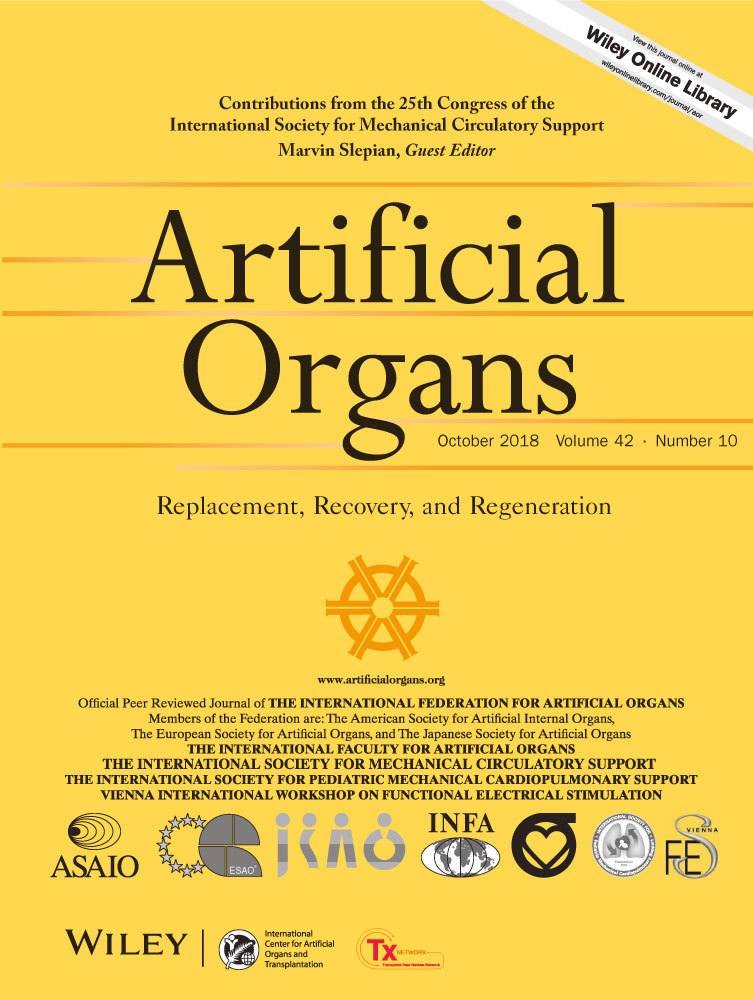The Effect of LVAD Pressure Sensitivity on the Assisted Circulation Under Consideration of a Mitral Insufficiency: An In Vitro Study
Abstract
Current left ventricular assist devices (LVADs) differ with respect to their pump characteristics as described by the pump characteristic curve (also called HQ-curve). Pressure sensitive LVADs depict a flat characteristic curve while most available LVADs have a steep, less pressure sensitive characteristic curve. This in vitro study investigated the effect of LVAD pressure sensitivity with a focus on the afterload of the right ventricle (RV) which is one out of many factors influencing right heart failure (RHF). To this end, two laboratory pumps differing in pressure sensitivity were tested as LVAD in an established, active mock circulation loop (MCL). The MCL represented patients with left heart failure and mitral insufficiency as another contributing factor to RV afterload. The results show that the pressure-volume loop (PV-loop) of the left ventricle (LV) undergoes a leftward and thus somewhat of a downward-shift for highly pressure sensitive support. Consequently, the LV is unloaded to a higher degree at comparable arterial blood pressure and identical cardiac output, pulmonary and systemic vascular resistance and ventricular contractility. This causes a concomitant decrease of RV afterload. This effect seems to be due to increased unloading during systole. In case of a severe concomitant mitral insufficiency and looking at left atrial pressure, the difference is 18.5%. Without mitral insufficiency, the difference is reduced to 10.2%.
Conflict of Interest
RG, CB, AH, and RK are employees of ReinVAD GmbH.




